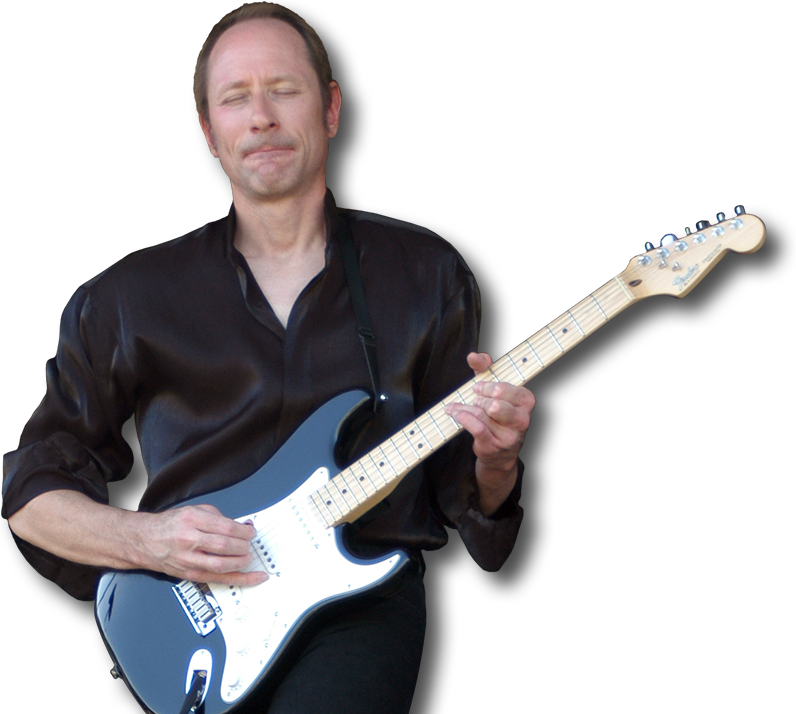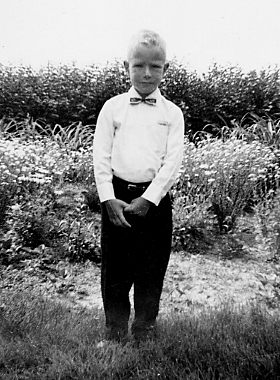 I can’t remember a time when music wasn’t the most important thing to me. Not getting famous or rich, just the music itself and the impact it had on my imagination. Before first grade, maybe four years old, I’d stand in front of my parents’ stereo and listen to their records, which were like Herb Alpert and the Tijuana Brass or James Bond film soundtracks. I would just get the shakes on some parts, overcome with emotion and inspiration. This was way before I heard rock for the first time.
I can’t remember a time when music wasn’t the most important thing to me. Not getting famous or rich, just the music itself and the impact it had on my imagination. Before first grade, maybe four years old, I’d stand in front of my parents’ stereo and listen to their records, which were like Herb Alpert and the Tijuana Brass or James Bond film soundtracks. I would just get the shakes on some parts, overcome with emotion and inspiration. This was way before I heard rock for the first time.
I was an only child in a small town on the Wyoming prairie, often alone with nothing but my imagination and a lot of wide open spaces. One time I got terribly sick and was stuck in bed for a month during grade school summer vacation. All I had was a little record player and some records. The only person I saw was my mother three times a day, like she was feeding the dog. At that age a month is forever. Alone. With just the music.
We moved to Denver in 1968 when I was 12 years old. By then I’d started to hear rock music on the radio and on television shows like the Ed Sullivan Show. The rock music that was on the radio then was more a mix of styles than it is now. You’d hear a song by Three Dog Night or Led Zeppelin and then one by the Temptations or Sly and the Family Stone. I played sax in my junior high school band, but was really starting to notice the electric guitar. It cut through on solos like a sax or trumpet, but could also play chords, so a guitar player could play music either with a band or alone.
The moment I decided it was imperative that I learn to play the guitar was when I heard one particularly graceful blues lick that Martin Barre played during the piano intro to Jethro Tull’s “Locomotive Breath.” I didn’t get a guitar right away, but the desire crystalized. I started asking people who bands or players were if something new caught my ear. If I was walking through a parking lot and something on someone’s car stereo caught my ear I would boldly ask who it was. It would be like “that’s Humble Pie” or “that’s Ten Years After.” I got into players like Leslie West from Mountain or Mark Farner with Grand Funk Railroad. They provided some significant thrills and I loved their songs as a whole, but I had a guitar sound in my head that I didn’t hear anybody making.
SWITCHING FROM SAX TO GUITAR AND THE FORT COLLINS YEARS
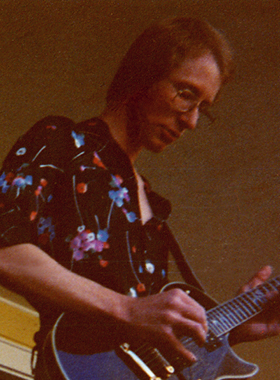 A few months before I started college at Colorado State University in 1974 I bought my first guitar, a new but slightly dented ’73 Fender Stratocaster without a case. For the first two years I carried it around in the cardboard box it shipped in. I started learning to play guitar for real on the day I started college, playing along with albums by Joe Walsh and the James Gang, Robin Trower and other hard rock bands. My first method book was Improvising Rock Guitar by Pat Thrall, which taught me the blues box and got me off and running. I’d been playing a couple of months and was already jamming with guys who had played for years, I had a knack for it plus a head start on theory from playing the sax.
A few months before I started college at Colorado State University in 1974 I bought my first guitar, a new but slightly dented ’73 Fender Stratocaster without a case. For the first two years I carried it around in the cardboard box it shipped in. I started learning to play guitar for real on the day I started college, playing along with albums by Joe Walsh and the James Gang, Robin Trower and other hard rock bands. My first method book was Improvising Rock Guitar by Pat Thrall, which taught me the blues box and got me off and running. I’d been playing a couple of months and was already jamming with guys who had played for years, I had a knack for it plus a head start on theory from playing the sax.
A couple of months along and I bought the James Gang’s Bang album with Tommy Bolin on guitar. When I heard Tommy the first time all of my searching for the perfect rock guitar approach was resolved. Tommy’s tone raised the hair on the back of my neck and he had a high degree of technical ability with notes picked cleanly like a handful of perfectly cut jewels. From the beginning of a song to the end of a song, his playing would be interesting and inspiring all the way through, standing out yet fitting perfectly. He rarely played anything that didn’t make sense, and that was a big deal to me. To this day Tommy’s still my main guitar hero, even as I developed my own musical path.
While in college I had many of the richest musical experiences of my life. My college roommates dug what I was playing on guitar, so Dave Marsh learned to play bass and Steve Chaffey learned to play drums. We were the Head Arrangers and played at keggers, house parties and street parties. Our shows were a mix of covers like Tom Petty or UFO along with original space rock instrumentals that I was starting to write with increasing frequency. The really amazing gigs were the small free festivals that went all day and late into the night up in Poudre Canyon west of Fort Collins. Some of the people who lived up there would build stages beside their house and invite a few hundred people. We’d be partied up, jamming under the moonlit clouds, the sound shooting through the hills. Nothing I’ve ever done can equal those mountain gigs for intensity.
Near the end of my college years I was asked to play on two avant garde jazz albums by the Mnemonist Orchestra. It was weird music to me, but there was a big niche market for it in Europe. I still see Mnemonist tracks appearing on some of the more adventurous internet radio stations and have seen the two albums I played on selling for hundreds of dollar on the internet.
WRITING, RECORDING AND RAMPANT SQUID
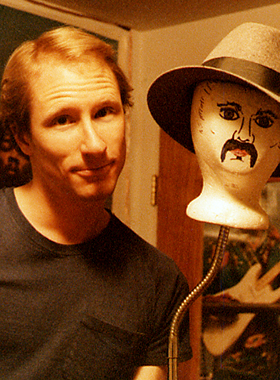 After I graduated from college I tried to get into a pro band to earn a living. That resulted in a lot of learning but in nothing that stuck together. I learned a couple of sets worth of cover songs but it wasn’t panning out, so I took an opportunity to start a career as a graphic artist and concentrate on writing originals for purely artistic reasons. I’d written most of the space rock that the Head Arrangers played in college and continued to write after my move back to Denver. I was listening to a lot of jazz/rock fusion and progressive rock and wasn’t trying to write radio rock, I just wanted to write new stuff that was exciting to play and give tapes of to my friends.
After I graduated from college I tried to get into a pro band to earn a living. That resulted in a lot of learning but in nothing that stuck together. I learned a couple of sets worth of cover songs but it wasn’t panning out, so I took an opportunity to start a career as a graphic artist and concentrate on writing originals for purely artistic reasons. I’d written most of the space rock that the Head Arrangers played in college and continued to write after my move back to Denver. I was listening to a lot of jazz/rock fusion and progressive rock and wasn’t trying to write radio rock, I just wanted to write new stuff that was exciting to play and give tapes of to my friends.
I started recording a lot, initially with two microphones straight into a cassette deck and later a small Peavey mixing board with a few more mics mixed in stereo to a cassette. I’d invite guys to my house on weekends and turn on the recorder. I had a knack for writing stuff that made people want to play and most of the sessions were really energized. We’d play the most recent stuff I’d written or do another take of a tune we’d done before that we wanted another crack at. A bass player named Larry Cardenas was a mainstay. He and I used to call each other “Squid” and my tape recorder and mixer became Rampant Squid Sound Studio. If I took a recorder to someone else’s place it was Rampant Squid Mobile.
During this time I was also recording solo guitar performances where I would play an hour or so of the the most recent material I’d written or occasionally a cover I would work up an arrangement for on acoustic or electric guitar. I have a boxes of cassette tapes from that period that I intend to digitize and pick the best material to post at some point. I knew when I recorded it that someday when I was old and tired I could go back through the stuff and catch some of the spirit of those days when the passion for it all ran so high.
My main drummer during this period was Dan Lile, who’s current band Ajalon recently released an album with keyboards by Rick Wakeman from legendary progressive rockers Yes. I also sometimes played with Dan and a bass player named Randy George, who is also in Ajalon and has toured and recorded with Neal Morse and Mike Portnoy. One of the lineups Dan and I had was a three-piece fusion band called Pictures that recorded some demos and played live on KFML radio in Denver. I played in many jams and lineups during this period though, the goal was to get a rush from playing. If a break were to happen then great, but the main thing was to get the rush. My graphics career was in gear and I was single, so I could focus my time off work on music and ride straight into the horizon creatively.
RUCKUS ROCKS THE CLUBS
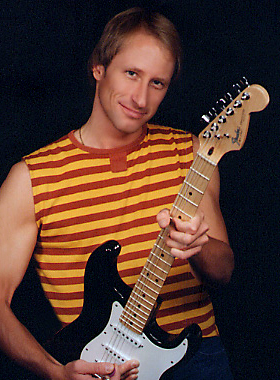 One of these jams lead to the formation of Ruckus, a hard-working covers band I played in for a year around 1983. My cousin Andrea married a drummer named Dave Zimmerman and Dave and I had jams with a few different lineups recording my originals. I usually pulled the players together, but on one jam up in Fort Collins Dave brought in Mark Pacheco on rhythm guitar and vocals and Merlin Neumiller on bass. We played some bar band songs like “Riding the Storm Out” and five songs into it Mark said, “Do you guys want to play some gigs?” I thought the songs kicked ass too, so I said yes and Mark called up a club and booked us for the next weekend and off we went. That lineup would remain the same for the life of the band except for Bob Hufziger replacing Merlin on bass about half way down the line.
One of these jams lead to the formation of Ruckus, a hard-working covers band I played in for a year around 1983. My cousin Andrea married a drummer named Dave Zimmerman and Dave and I had jams with a few different lineups recording my originals. I usually pulled the players together, but on one jam up in Fort Collins Dave brought in Mark Pacheco on rhythm guitar and vocals and Merlin Neumiller on bass. We played some bar band songs like “Riding the Storm Out” and five songs into it Mark said, “Do you guys want to play some gigs?” I thought the songs kicked ass too, so I said yes and Mark called up a club and booked us for the next weekend and off we went. That lineup would remain the same for the life of the band except for Bob Hufziger replacing Merlin on bass about half way down the line.
I was living in Denver, where my job was. Dave and Mark lived in Fort Collins. Merlin lived all the way up in Laramie, Wyoming, a college town like Fort Collins. Our gigs spanned that area and a little more, but I spent most of my time traveling north. It was hard driving long distances to practices and shows, but I was young enough to weather it. There were changes going on at my day job that were stressing me out beyond the healthy stress of a hard day’s work, so after a few months of trying to balance the job and band I left graphic arts for a while and did Ruckus full-time.
Ruckus was a hot band that packed dance floors, playing songs ranging from Elvis Presley to ZZ Top, Billy Idol and The Cars. Our audiences were about half guys and half gals, which I thought was fantastic. I put napalm on the leads in the right places, but we really concentrated on the album arrangements, the essences of the grooves. After all my time as the artist guy this was my one shot at the kind of band that girls really, really liked and I’m glad I took it before I went back to being the artist guy. Even though we were doing covers I was still able to play in a way that had a lot of people come up to me after shows and say it was special.
This was also my first experience with how popularity can have negative aspects for someone who needs more time alone than average. People were around so much, wanting me to hang out or something. That’s great up to a point but the balance was tipping the wrong way for me. I felt like I was having to fight for time to practice guitar by myself or for my imagination to bloom for a while. We made enough money to get by but on a razor’s edge and I was starting to feel like a bum. I have a really strong work ethic so I took that feeling seriously. We worked hard loading, driving and unloading our truck full of gear including a full PA system, but while Friday and Saturday nights with the clubs packed were heaven the dead weekday or Sunday nights made me increasingly wonder what I was doing there. Then two of our guys had a serious altercation and the band wound down quickly.
MIRAGE AND FLIGHTS OF FUSION
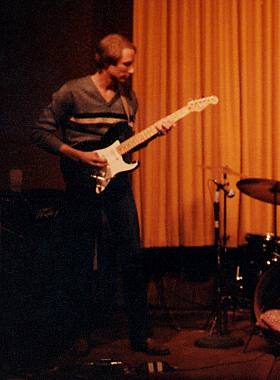 After Ruckus I was asked by some successful musicians to join new commercial bands, but none of the lineups were really comfortable. I went back to a day job in graphic arts in Denver and started recording originals with friends again. One lineup had myself and Steve VanDewater on co-lead guitars, Paul Molnar on bass and Mike Mixter on drums. I had jammed with Steve a number of times, but Paul and Mike were new to me. We were all sharp players and it felt like a band so we became Mirage and were together around a year.
After Ruckus I was asked by some successful musicians to join new commercial bands, but none of the lineups were really comfortable. I went back to a day job in graphic arts in Denver and started recording originals with friends again. One lineup had myself and Steve VanDewater on co-lead guitars, Paul Molnar on bass and Mike Mixter on drums. I had jammed with Steve a number of times, but Paul and Mike were new to me. We were all sharp players and it felt like a band so we became Mirage and were together around a year.
Steve and Mike were both playing in working bands at the time, but dug Mirage as a creative outlet. Paul and I both had day jobs and no desire to do a club grind, so Mirage mainly rehearsed and recorded original instrumentals. I wrote most of the material but Steve brought in a few strong originals plus a few covers including what would become our signature rendition of “Put It This Way,” a challenging track originally by Colosseum II featuring Gary Moore. We did play some significant parties and a few times in halls. Though Mirage wasn’t playing out we circulated socially with the bands that were playing the big clubs and I was better known in Denver for Mirage than for my touring covers band Ruckus, who had seldom played in Denver.
In late summer 1984 it came to pass that Paul was getting married and moving to another state, so we broke up amicably. We played one last time at Mike Mixter’s house in the mountains. It was a fitting performance, we played a really tight set in the living room with the windows open while people barbecued and played volleyball outside. I had set up two microphones straight into my cassette deck and recorded it. In 1998 I released a batch of the tunes on a CD titled Mirage Live In Evergreen 1984. I have more tape of us in the studio and live that I will eventually pick the best from to release.
We did do one reunion show on Paul Molnar’s birthday in 1985, close to a year to the day after our breakup. A drummer named Phil Bailey had an elaborate home studio and invited four or five bands to play sets. Phil had previously played with Hendrix tribute showman Randy Hansen. We had no rehearsals and were rusty, but we played a pair of strong sets that got some roaring applause. A videographer friend was going to shoot our two sets, but shortly into our first set his battery died and he had to drive across town to get a backup. By the time he made it back we were deep into our second set. We only got about half an hour of video and the copy I have on VHS is terrible quality, but the performances are pretty riveting so I’m glad I have what I have.
THE DAY JOB GETS SERIOUS BUT STILL RECORDING
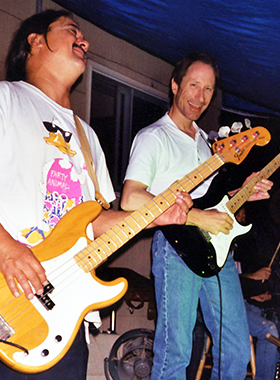 When Mirage ended my career as a graphic artist was starting to take off in earnest. I moved to a larger company and within a year was managing the art department and eventually became vice president. In spite of the the increased job pressure and responsibilities I was still writing and recording my originals, but mostly by myself after learning to play bass, some keyboards and to program drum machines. In 1985 I got my first 4-track cassette recorder and began to record and release original albums that were distributed on cassette to my friends.
When Mirage ended my career as a graphic artist was starting to take off in earnest. I moved to a larger company and within a year was managing the art department and eventually became vice president. In spite of the the increased job pressure and responsibilities I was still writing and recording my originals, but mostly by myself after learning to play bass, some keyboards and to program drum machines. In 1985 I got my first 4-track cassette recorder and began to record and release original albums that were distributed on cassette to my friends.
During the second half of the 1980s and through the 1990s I wasn’t jamming or playing live shows very often. I made a few trips a year up to Fort Collins to play with Head Arrangers bassist Dave Marsh and friends just for fun. In the 1990s Dave began a series of annual late-summer Dave Fests in the huge back yard of his house near the edge of town. He built a stage area on the back patio with his own PA system that he used gigging or doing live sound for other bands around town. Like the old days, bands would play all day and into the night with barbecues and volleyball going on. The best years were slices of heaven, we played our butts off and the buzz was righteous. Around 2011 Dave had to move to a different part of town and that was the end of those wonderful times.
In 1995 I released a CD called Rip City that collated some of my 4-track recordings including a few I did with drummer Dan Lile. I had a company in Texas produce professionally packaged boxes of them, but their promised mastering job sounded incredibly weak and I distributed very few copies. I’m looking forward to remixing and mastering that material so that all that work and those ideas don’t go down the drain.
By this time I was moving into recording digitally, first with Cubase then Pro Tools. I released a new original solo CD every few years mainly to my friends, as I had with cassettes. In late 1999 I left the company I had been at for 15 years and started my own web and print production company. Even with that change I continued to write and record. This is around the time that the internet really started to happen and in 2002 that brought about some contacts that opened the door to a number of incredible experiences.
BOBBY BERGE AND THE TOMMY BOLIN ARCHIVES
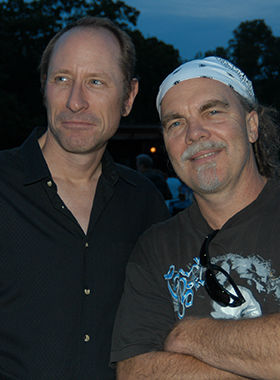 One thing interesting that happened during the course of things is that I became involved with the scene built around my first guitar hero, Tommy Bolin. Tommy passed away on December 4, 1976 at age 25, but has left an intense legacy of fans around the world. I became friends with Bobby Berge, who had played drums with Tommy in Zephyr and Energy. Bobby also played on many of Tommy’s most beloved recordings, including parts of Teaser and all of Private Eyes. Bobby liked my Wide Open Spaces CD and we started making music together. In 2002 I played in Bobby’s band at the 2002 Tommy Bolin Music Festival in Tommy’s home town of Sioux City, Iowa. We played again as the Bobby Berge Project at the 2006 Fest with nearly the same lineup. In between those appearances Bobby and I worked on other live shows and studio recordings together.
One thing interesting that happened during the course of things is that I became involved with the scene built around my first guitar hero, Tommy Bolin. Tommy passed away on December 4, 1976 at age 25, but has left an intense legacy of fans around the world. I became friends with Bobby Berge, who had played drums with Tommy in Zephyr and Energy. Bobby also played on many of Tommy’s most beloved recordings, including parts of Teaser and all of Private Eyes. Bobby liked my Wide Open Spaces CD and we started making music together. In 2002 I played in Bobby’s band at the 2002 Tommy Bolin Music Festival in Tommy’s home town of Sioux City, Iowa. We played again as the Bobby Berge Project at the 2006 Fest with nearly the same lineup. In between those appearances Bobby and I worked on other live shows and studio recordings together.
I was unaware of the Bolin audio collectors scene at the time. The Tommy Bolin Archives had been putting out some CDs that I bought, but when Bobby gave me a few rough old cassette tapes of him with Tommy I was pretty surprised. I worked on some of them in the studio to clean them up a bit and we gave copies to friends. Word got around and it came to be that I was asked by the Archives to do restoration and mastering on a CD of Tommy‘s final show in Miami. That became the first of five CDs I did for them. I was also asked to make updates to their small website. After making updates for a month or two I decided to redesign and rebuild it from scratch knowing that I would grow it into something larger with more historical assets. In short order it became the consistent number one hit result for web searches for Tommy and was known for high quality historical information, interviews and stories. As of April 2018, however, my 16 year run with the Archives ended with its sale. That site is gone now, but after speaking with Johnnie Bolin I developed a new non-profit historical resource site and on September 30, 2018 launched tommybolin.com on my own. That site was as robust as and in many ways superior to the original Archives site I built. tommybolin.com ran until August 11, 2021 when the legal climate for this kind of non-profit historical site finally wore me out. 19 years of taking Tommy to the people is over. Epic memories though. My claim in the scene now is I’m the original guitarist in the Bobby Berge Project.
JOHN HERDT & WALLY Z
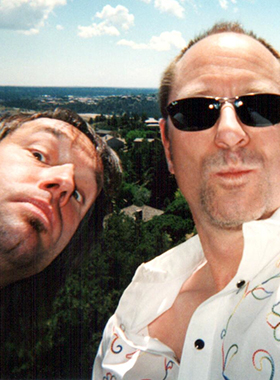 One positive result from my time in the Bolin scene was hooking up with a great drummer from Canada named Wally Zielonka. We first met at the 2003 Bolin Fest in Clear Lake, Iowa. Wally had played drums with a great melodic hard rock originals band called Ozgood Slatter and Alice Cooper tribute band the Billion Dollar Babies. He was a pro grade hard rock drummer who could cover a lot of styles. We began to work on music long distance with me in Lakewood, Colorado and Wally in Paris, Ontario. I would send him a rhythm guitar track with a click track and he would play drums along with it and send me a file to put into my Pro Tools session where I would add a second guitar and bass. It is a standard way for many people to work now, but at the time a surprising number of people couldn’t believe we were able to do it that way.
One positive result from my time in the Bolin scene was hooking up with a great drummer from Canada named Wally Zielonka. We first met at the 2003 Bolin Fest in Clear Lake, Iowa. Wally had played drums with a great melodic hard rock originals band called Ozgood Slatter and Alice Cooper tribute band the Billion Dollar Babies. He was a pro grade hard rock drummer who could cover a lot of styles. We began to work on music long distance with me in Lakewood, Colorado and Wally in Paris, Ontario. I would send him a rhythm guitar track with a click track and he would play drums along with it and send me a file to put into my Pro Tools session where I would add a second guitar and bass. It is a standard way for many people to work now, but at the time a surprising number of people couldn’t believe we were able to do it that way.
Our first three tracks together appeared on my Gather CD in 2004, which also had Bobby Berge drumming on five other tracks. We went on to record four commercial albums as John Herdt & Wally Z; Across the Border (2006), Shadow Fades Away (2009), October Sky (2011) and Horizon Miles (2013). These recordings included some guest performances from people who played with Tommy Bolin back in the day, including Tommy Stephenson on “Busted” from October Sky and David Givens from Zephyr, who played all the bass on Horizon Miles.
After Horizon Miles my wife and I started having trouble coming at us from all sides, including moving from our home of 32 years in Lakewood, Colorado to Montrose on the west side of the mountains. Wally was busy with his job, family and a few other potentially big music projects. I was only able to work on music in spurts and my spirits were pretty low. I did get some music done because I never really stop working, but I did it all myself with programmed drums like I’ve done on many past projects. In 2017 I released my first solo album in over a decade, titled The Winter Candle.
I wasn’t sure if I would ever do another album of originals, but ideas would come to me during practices and I would log the good ones. I’ve done that for decades and always feel like the well has got to be dry each time I finish an album. I’m also at the point where I don’t like guitar instrumental album much anymore, I’d rather hear a song now, Three Dog Night or early Grand Funk Railroad, Prince, The Doors. The new ideas I was getting struck me as particularly song-like, it was like that on Winter Candle but this new batch even more. Shorter, concise, strong hooks and choruses and definitive solos that wouldn’t bore people who aren’t guitar nuts. Anyway, I sent a couple of rhythm guitar with click tracks to Wally to drum on as singles for fun or a one-off video, and the old snowball started rolling. On September 19, 2019 we released the fifth John Herdt & Wally Z album, Places We Loved.
MONTROSE, CO
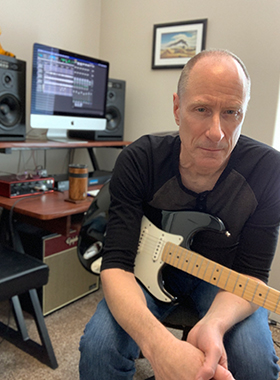 After the release of Places We Loved I spent months and cataloging and digitizing all the boxes of stereo cassettes, 4-Track cassettes and 4-Track MiniDiscs that I recorded between 1977 and 1998 before I started recording to computer. The tapes in particular are getting old and unstable, so I was glad to get the stuff digitized. I have years of work ahead of me going through that stuff cleaning it up and engineering some of it for release.
After the release of Places We Loved I spent months and cataloging and digitizing all the boxes of stereo cassettes, 4-Track cassettes and 4-Track MiniDiscs that I recorded between 1977 and 1998 before I started recording to computer. The tapes in particular are getting old and unstable, so I was glad to get the stuff digitized. I have years of work ahead of me going through that stuff cleaning it up and engineering some of it for release.
I’m retired now, after 47 years of working I have more time to practice and record during the week. Ideas were coming again and I started laying down tracks just because that’s what I do. Then the plague hit and the world turned upside down. I got fed up with Facebook’s constant stream of political pressure and closed my account on January 3, 2021. That isolated me except for close friends that I’d talk to by email or phone. I got even more into writing and recording, I had more opportunities during week days to knock off some tracking and all the playing was making it easier to play parts with some sass. My newest solo CD, Desert Radio, was released on January 1, 2022. I’m still on a creative roll, and have three new tunes done already and they are pretty kicking. Lots of work on the house and yard coming up in the spring so I’m striking while the iron is hot. Our story of coming to live in Montrose was a hard one but I am infinitely thankful to be here in these hard years, and my musical spirit is strong in this mountain valley.

